Milder weather and continued increases in pet travel and importation have led to a rapidly changing parasite picture in the UK, and 2022 has been no exception. New data and novel cases have been seen in a range of different parasites.
Imported parasites
Numbers of imported rescue cats and dogs have increased over the past few years with the associated risk of exotic pathogens entering the UK. These numbers have been added to in 2022 by Ukrainian pets accompanying people displaced by the war in that country. With the exception of these Ukrainian pets, ESCCAP UK & Ireland does not support importation where pets can be rehomed in the country of origin. Where importation is occurring, ESCCAP UK & Ireland is keen to work with charities to improve screening of animals before importation.
Numbers of cases of Heartworm and Leishmania reported to ESCCAP UK & Ireland continue to remain high, imported from a wide variety of countries both inside Europe and from more distant locations such as South America, Africa and Asia. Another case of suspected horizontal transmission of Leishmania has recently been recorded in the UK (Luker et al, 2022). This is a reminder that Leishmania infection needs to be considered as a differential in dogs with relevant clinical signs living with other positive pets, and in those whose parents have lived or travelled abroad. Clinical presentations are varied and commonly include lymphadenopathy, cutaneous signs, weight loss, splenomegaly and renal signs associated with glomerulonephritis. Less commonly polyarthritis, thrombocytopaenia, ocular inclusion bodies, uveitis and neurological signs associated with spinal and CNS granulomas may be present.
The filarial nematode Onchocerca lupi has been reported in two dogs imported into the UK for the first time (McGarry et al, 2022). Adult worms are usually found in periocular nodules and should be considered as a differential for dogs presenting with these lesions from continental Europe, North Africa, the Middle East and the USA.
Last year, Chief Veterinary Officer, Christine Middlemiss highlighted the zoonotic risk of Brucella canis entering the UK in imported dogs, and this risk continues to be high (Middlemiss, 2021). Vigilance for relevant clinical signs in practice is vital alongside screening dogs imported from endemic countries, both to reduce personal risk and also to help prevent establishment of this pathogen. The potential risk to UK dogs and owners was demonstrated in the summer when the first case of a human contracting B. canis from her imported pet was reported (Gray, 2022).
A study supported by ESCCAP UK & Ireland and IDEXX Small Animal Health has found a wide range of vector-borne parasites in dogs coming from Sierra Leone. Prevalence data are important for health planning in these pets but also for UK veterinary practices dealing with an increasing number of rescue dogs imported into the UK from Africa (Dobinson and Wright, 2022). Parasites found included Dirofilaria immitis (Figure 1), Ehrlichia spp (Figure 2), Anaplasma platys (Figure 3) and Babesia spp (Figure 4).
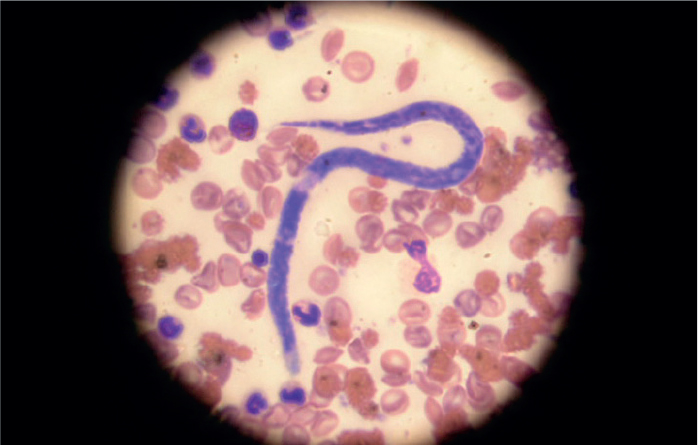
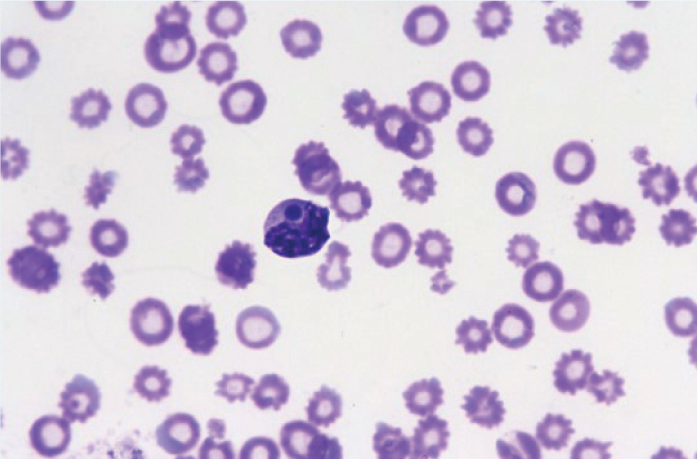
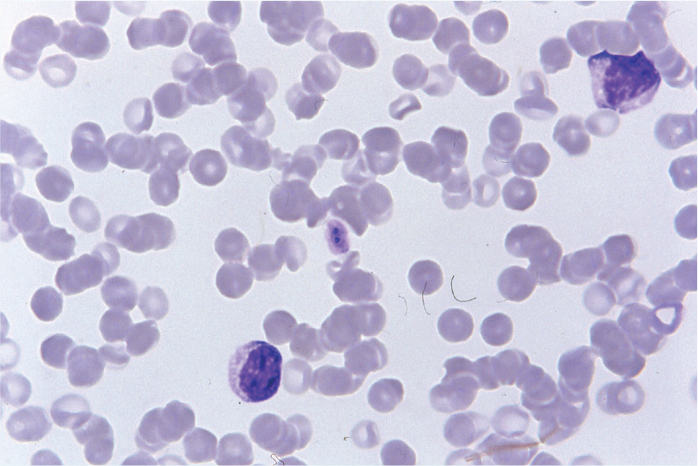
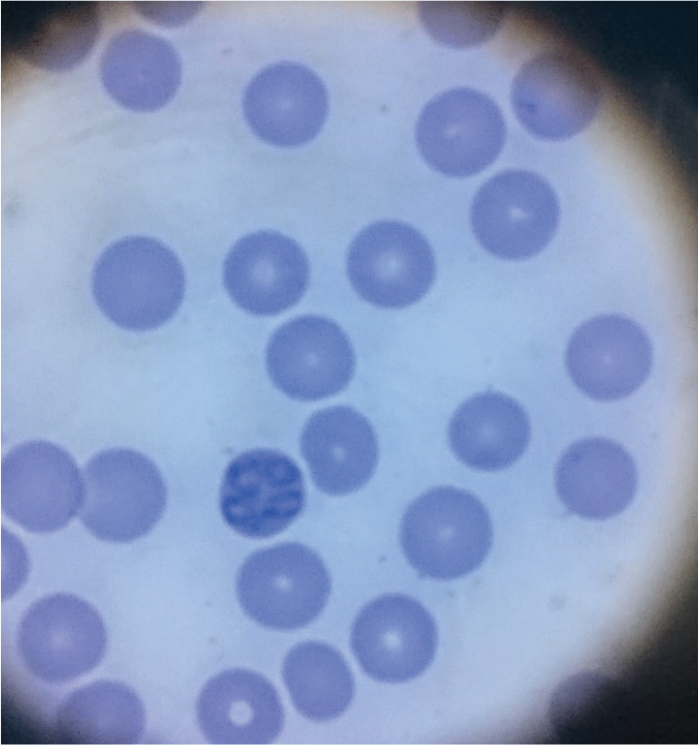
ESCCAP UK & Ireland continues to recommend that vets follow four key steps (the ‘four pillars’) in all imported dogs. These are:
- Checking for ticks and subsequent identification
- Treating dogs with praziquantel within 30 days of return to the UK in addition to the compulsory treatment, and treating for ticks if a tick treatment is not in place
- Recognising clinical signs relevant to diseases in the countries visited or country of origin
- Screening for exotic parasites in imported dogs.
For dogs imported into the UK ESCCAP UK & Ireland recommend the following screening tests:
- Leishmania – quantitative serology and/or PCR (polymerase chain reaction)
- Heartworm – antigen blood test and a Knott's test
- Ehrlichia canis and Anaplasma spp. – serology, PCR
- Hepatozoon canis – blood smear and/or PCR
- Babesia spp. – PCR
- B. canis – serology and PCR. Consult your external lab for a suitable test.
- Leishmania and heartworm testing should be repeated 6 months later if initial tests are negative or if relevant clinical signs develop
A thorough clinical examination is also essential to identify relevant clinical signs and to look for evidence of gross worm infestation such as Thelazia callipaeda (eyeworm, Figure 5), Dirofilaria repens (skin worm, Figure 6) and Linguatula serrata (nasal pentastomid, Figure 7). ESCCAP UK & Ireland has collaborated with the Animal and Plant Health Agency (APHA) to provide a free service for the identification and surveillance of these exotic parasites in UK dogs. This is vital to improve prognostic outcomes and to minimise the risk of UK establishment of these parasites. APHA will carry out, free of charge, morphological identification of suspected cases of these parasites seen in veterinary practices in England and Wales. Samples should be posted to the APHA Carmarthen Veterinary Investigation Centre. Sample submissions must be accompanied by full clinical history to qualify for free testing. There is more information at http://apha.defra.gov.uk/vet-gateway/surveillance/experts/parasitology.htm
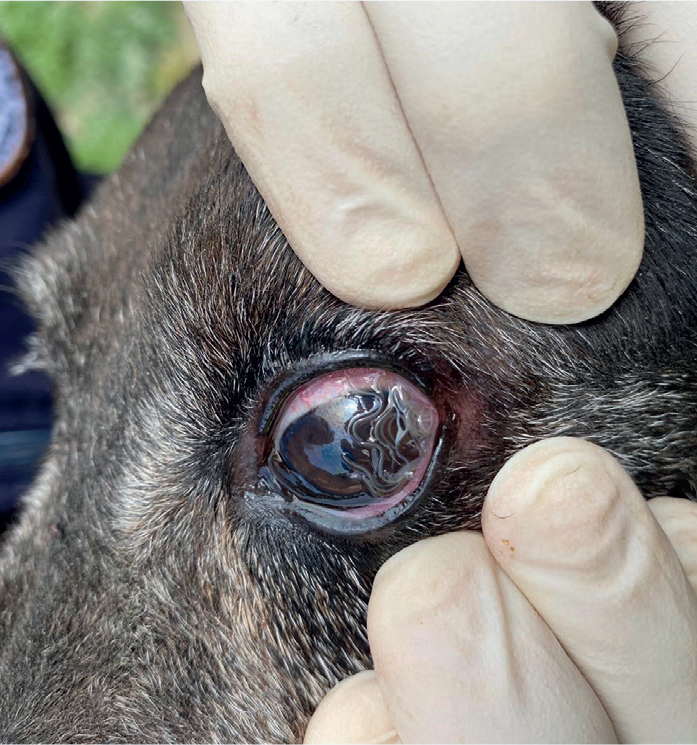
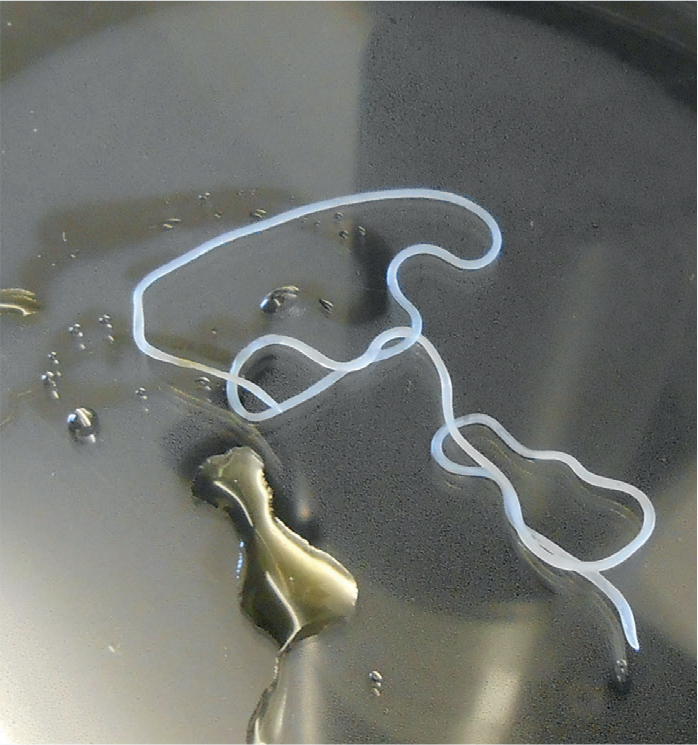
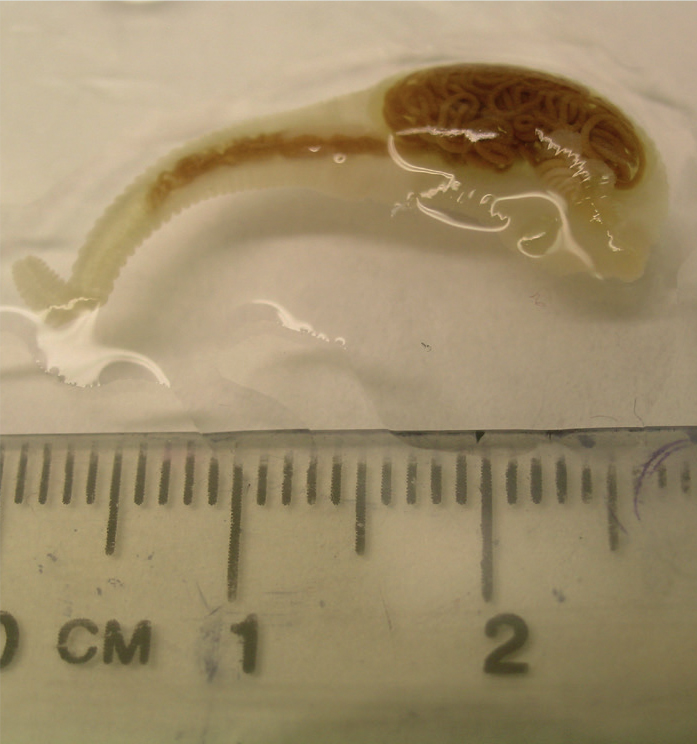
Toxocara
Owing to the zoonotic risk that Toxocara canis and T. cati carry, and the potential for all cats and dogs to be infected, ESCCAP UK & Ireland continues to advise that all UK cats and dogs are treated at least every 3 months to reduce egg shedding, and high risk groups (those cats and dogs on raw unprocessed diets, those that hunt, those living with children or immune compromised adults) should be treated monthly. If faecal testing is used as an alternative, this should be carried out at least at the same frequency as treatment would have been, and owners should be made aware of the potential for shedding of eggs with zoonotic treatment between tests.
In a recent Europewide study, two thirds of dog owners in parks had been found to have treated their dogs for worms in the past 3 months. The UK also had the lowest prevalence of ascarids (0%) in this study. The prevalence was much higher in countries where treatment percentages and frequencies were lower, emphasising the importance of regular deworming strategies and routine testing to know their efficacy (Drake et al, 2022). Meanwhile, much larger longitudinal studies are required to know the true prevalence of Toxocara in the UK.
Environmental contamination with eggs and potential zoonotic exposure, however, does continue to be a concern. Research just published in The Veterinary Nurse found that 74% (17/23) of the soil in parks investigated in the East Midlands contained Toxocara spp. eggs (Kaul et al, 2022). These are the first new soil contamination data to be published, demonstrating the ongoing need for Toxocara control in cats and dogs to minimise zoonotic exposure to eggs in public spaces.
Ticks
Borrelia spp. causing Lyme disease continues to be widely endemic in the UK and tick-borne encephalitis virus is present in endemic foci in Thetford Forest and the New Forest. The mild and humid autumn is likely to extend peak tick questing times. Checking for and removing ticks within 24 hours, and using an effective product that will rapidly kill or repel ticks, will greatly reduce the risk of transmission for pets and owners walking in high risk areas such as outdoor areas with tall grass, bracken and those shared with deer or ruminants. Pets with a previous history of tick exposure should also be treated as it is likely that their lifestyle will expose them to ticks again in the future.
A study of Dermacentor ticks across the UK has found that Babesia canis appears to have died out in the Essex tick population. However, another infected tick was found in southwest England, showing that this parasite is likely to continue to be present at least transiently in UK Dermacentor populations and needs to be considered as a differential in cases of canine immune-mediated haemolytic anaemia. Tick protection is essential for dogs living in or visiting areas endemic for Dermacentor (Sands et al, 2022).
Lungworm
Relatively mild weather in 2021 and into 2022 has likely supported continuing slug activity and numbers. Veterinary professionals should therefore continue to be vigilant for cases of Angiostrongylus vasorum in their area and advise preventative treatment for high risk dogs (previously infected dogs, those dogs living in close proximity to other cases, those co-prophagic, eating slugs, snails, grass and amphibians). As well as preventative treatment for dogs whose geographical location and lifestyle puts them at risk from exposure from A. vasorum, simple precautions such as bringing toys, food and water bowls indoors at night and avoiding walking after periods of rain will also help to minimise any risk of transmission by this route.
The University of Nottingham is investigating why fenbendazole is still prescribed as a treatment for A. vasorum lungworm infection when there are licensed alternatives available. This is important to understanding factors influencing prescribing choices and future product development. For more information please visit YouTube (https://www.youtube.com/watch?v=KQdjf_wWSvY) or Twitter (https://twitter.com/Sci_Ani/status/1525127922071351297).


